Discover a structured approach to balanced nutrition with the 1700 Calorie Meal Plan, designed for weight management and overall well-being. This plan offers high-protein options, Paleo, and vegan variations, ensuring a sustainable and customizable diet for diverse needs.
Overview of the 1700 Calorie Diet
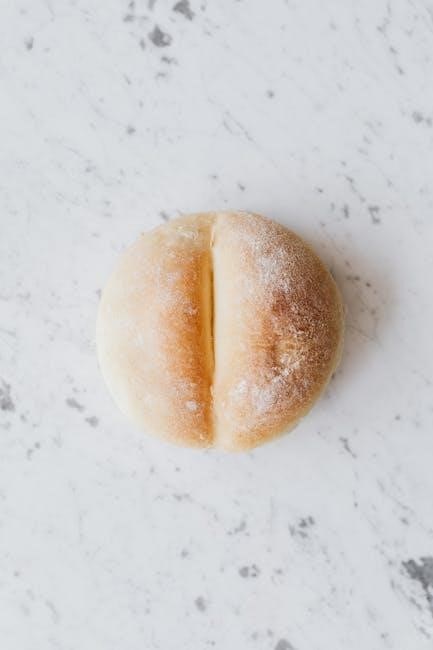
The 1700 Calorie Diet is a balanced eating plan designed to support weight loss or maintenance while providing essential nutrients. It focuses on portion control, nutrient-dense foods, and a structured approach to meals. This diet is ideal for individuals with a moderate activity level or those seeking a sustainable calorie deficit. It emphasizes high-protein options, healthy fats, and complex carbohydrates to keep energy levels stable. The plan is flexible, accommodating Paleo, vegan, and other dietary preferences. By prioritizing whole foods and minimizing processed items, the 1700 Calorie Diet promotes long-term health and wellness.
Importance of a Structured Meal Plan
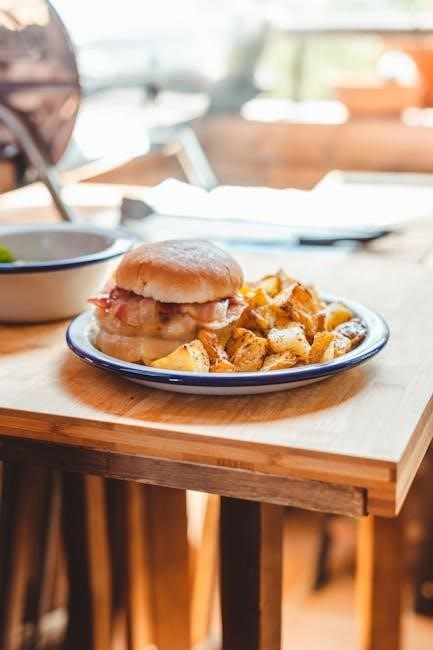
A structured meal plan is crucial for achieving and maintaining weight loss goals. It helps track calorie intake, ensuring adherence to the 1700 Calorie Diet. By organizing meals in advance, individuals avoid impulsive food choices and reduce the risk of overeating. A well-planned diet also promotes balanced nutrition, guaranteeing adequate protein, fiber, and essential vitamins. This structure supports metabolic stability, preventing extreme hunger and energy crashes. Additionally, a structured plan enhances accountability and consistency, key factors in successful weight management. It also saves time and reduces stress, making healthy eating more sustainable and enjoyable in the long term.
Benefits of a 1700 Calorie Meal Plan
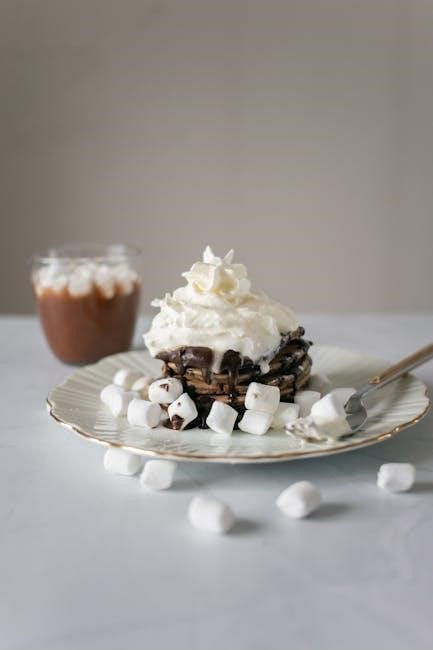
The 1700 Calorie Meal Plan offers numerous benefits, including steady weight loss, improved metabolic health, and enhanced energy levels. It promotes a calorie deficit while providing sufficient nutrients, reducing hunger and fatigue. High-protein options help maintain muscle mass, while balanced macronutrients support overall well-being. The plan is customizable, catering to various dietary preferences like Paleo and vegan lifestyles. It also encourages mindful eating and portion control, fostering healthier eating habits. With a structured approach, individuals can achieve their weight goals sustainably, improving both physical and mental health over time. This plan is ideal for those seeking a balanced and maintainable diet.
Understanding the 1700 Calorie Diet
The 1700 Calorie Diet is a structured eating plan designed to promote weight loss and improve overall health by creating a calorie deficit while maintaining essential nutrients and energy levels.
What is a 1700 Calorie Diet?
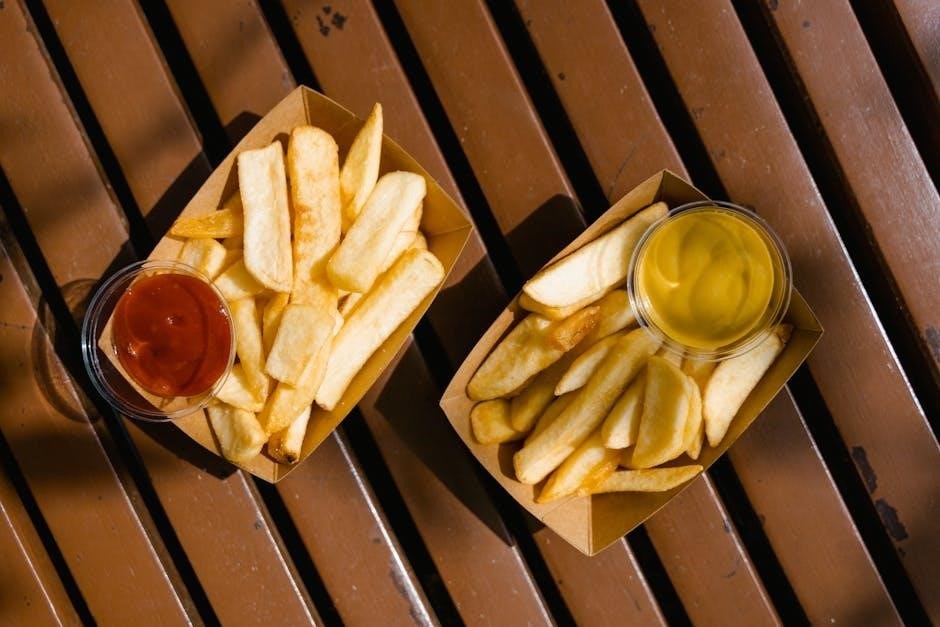
A 1700 Calorie Diet is a daily eating plan that restricts calorie intake to 1700 calories, tailored for weight loss or maintenance. It balances macronutrients, ensuring adequate protein, healthy fats, and complex carbs. This diet is often recommended for individuals with a moderate activity level or those aiming to create a calorie deficit. By focusing on nutrient-dense foods, it supports overall health while promoting fat loss. The plan can be customized to suit different dietary preferences, including high-protein, Paleo, or vegan options, making it versatile for various lifestyles and goals.
How to Calculate Your Daily Caloric Needs
To determine if a 1700 Calorie Diet suits you, calculate your daily caloric needs using factors like age, weight, height, and activity level. Basal Metabolic Rate (BMR) and Total Daily Energy Expenditure (TDEE) are key. For many, 1700 calories create a deficit for weight loss, but it may not meet needs for highly active individuals. Adjust based on goals and lifestyle. Consulting a healthcare professional ensures accuracy and safety, tailoring the plan to your specific requirements for optimal results.
Is 1700 Calories Enough for Weight Loss?
A 1700 Calorie Diet can be effective for weight loss, depending on individual factors like metabolism and activity level. For many, it creates a calorie deficit, promoting fat loss while maintaining muscle. However, highly active individuals or those with higher energy needs may find it insufficient. Balancing macronutrients and ensuring nutrient-dense meals is crucial. Pairing the diet with regular exercise enhances results. Always consult a healthcare professional to tailor the plan to your specific needs, ensuring it supports both weight loss and overall health without causing excessive hunger or fatigue.
Structure of the 1700 Calorie Meal Plan
The plan divides calories into balanced meals and snacks, ensuring nutrient-dense options. It focuses on portion control, macronutrient distribution, and meal timing for optimal weight management and energy.
Breakdown of Daily Meals
The 1700 calorie meal plan is structured into three main meals and one or two snacks, ensuring balanced nutrition throughout the day. Breakfast typically includes protein-rich options like eggs or a protein shake, paired with whole grains or vegetables. Lunch focuses on lean proteins such as chicken or fish, accompanied by a variety of colorful vegetables and complex carbs like quinoa or brown rice. Dinner mirrors lunch but may include heartier portions to satisfy evening hunger. Snacks are nutrient-dense, such as nuts, fruits, or yogurt, to maintain energy levels without exceeding calorie limits. This breakdown ensures sustained energy and satiety while promoting weight loss.
Macronutrient Distribution
The 1700 calorie meal plan emphasizes a balanced macronutrient distribution to support energy, satiety, and weight loss. Typically, the plan allocates 30-40% of calories to protein, 40-50% to carbohydrates, and 20-30% to fats. Protein sources include lean meats, fish, eggs, and plant-based options like legumes and tofu. Complex carbs such as whole grains, vegetables, and fruits provide sustained energy, while healthy fats from nuts, seeds, and avocados support hormone production and satisfaction. This balanced approach ensures nutritional adequacy, helping to maintain muscle mass and metabolism while promoting a calorie deficit for weight loss. Adjustments can be made based on individual needs and dietary preferences.
Meal Frequency and Timing
The 1700 calorie meal plan typically includes 3 main meals and 1-2 snacks, spaced evenly throughout the day. This structure helps maintain energy levels, supports metabolism, and prevents excessive hunger. Breakfast is often the largest meal, followed by a balanced lunch and a lighter dinner. Snacks are incorporated to keep metabolism active and curb cravings. Timing meals consistently can aid in weight loss and overall health. Adjustments to meal frequency and timing can be made based on individual schedules and goals, ensuring the plan remains flexible and sustainable for long-term success. Proper timing enhances the effectiveness of the calorie-deficit approach.

Sample 1700 Calorie Meal Plan
A sample 1700 calorie meal plan includes balanced breakfast, lunch, dinner, and snacks, with options like green protein shakes, omelets, and lean proteins, ensuring variety and nutrition.
Day 1: Breakfast, Lunch, Dinner, and Snacks
- Breakfast: Green protein shake with spinach, banana, and almond milk (300 calories, 25g protein).
- Lunch: Grilled chicken salad with mixed greens, cherry tomatoes, and olive oil dressing (400 calories, 35g protein).
- Dinner: Baked salmon with quinoa and steamed vegetables (500 calories, 30g protein).
- Snacks: A small apple with almond butter (150 calories, 4g protein) and a protein bar (100 calories, 10g protein).
This balanced meal plan provides approximately 1700 calories, with a focus on lean proteins, whole grains, and healthy fats to support weight management and energy levels throughout the day.
Day 2: Variations and Alternatives
Switch up your meals with these delicious alternatives while staying within the 1700-calorie framework. For breakfast, try scrambled eggs with spinach and whole-grain toast (250 calories, 18g protein). Lunch could be a turkey and avocado wrap with a side of mixed berries (450 calories, 28g protein). Dinner might feature baked cod with roasted sweet potatoes and green beans (400 calories, 30g protein). Snacks include Greek yogurt with honey (100 calories, 10g protein) and a handful of almonds (150 calories, 6g protein). These variations keep meals exciting while maintaining balanced nutrition and calorie control.
Day 3: Incorporating Different Food Groups
Start Day 3 with a hearty oatmeal topped with nuts and seeds (300 calories, 8g protein). For lunch, enjoy a quinoa salad with grilled chicken, mixed vegetables, and a light vinaigrette (450 calories, 35g protein). Dinner features baked salmon, steamed asparagus, and brown rice (400 calories, 30g protein). Snacks include an apple with peanut butter (150 calories, 4g protein) and a small handful of trail mix (120 calories, 3g protein). This day emphasizes a variety of food groups, ensuring balanced nutrition while staying within the 1700-calorie limit. The meals are designed to keep you energized and satisfied throughout the day.
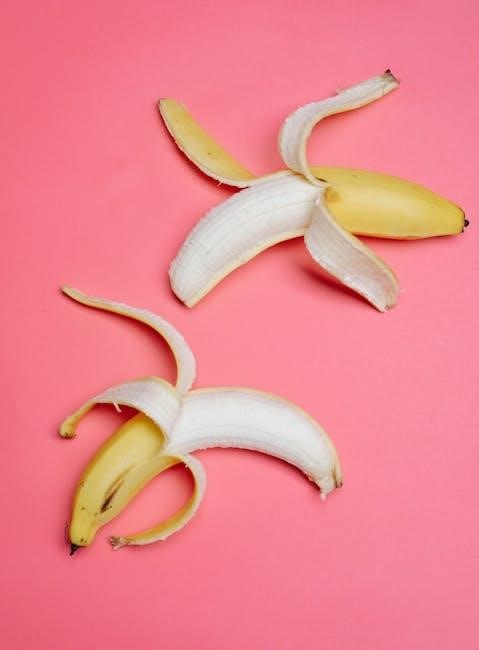
High-Protein Options in the 1700 Calorie Meal Plan
Incorporate lean proteins like chicken, fish, and eggs, along with plant-based options such as legumes and tofu, to meet your protein goals without exceeding calorie limits.
Importance of Protein in a Calorie-Deficit Diet
Protein is essential in a calorie-deficit diet as it helps preserve muscle mass, boosts metabolism, and reduces hunger. Adequate protein intake supports fat loss while maintaining lean tissue, making it a cornerstone of effective weight management plans like the 1700 calorie meal plan. By prioritizing high-quality protein sources, individuals can achieve their weight goals more sustainably and healthily.
High-Protein Breakfast Ideas
Start your day with protein-packed breakfasts to keep you full and energized. Options include Greek yogurt with berries, scrambled eggs with spinach, or a green protein smoothie. These meals are not only delicious but also align perfectly with the 1700 calorie meal plan, ensuring you meet your protein goals without exceeding your daily calorie limit. Incorporating these ideas helps maintain muscle mass and supports weight loss efforts effectively.
Lean Protein Sources for Lunch and Dinner
Incorporate lean proteins like grilled chicken, turkey, or fish into your meals for a balanced diet. These options are low in fat and high in protein, making them ideal for a 1700 calorie meal plan. Pair them with vegetables or whole grains to create satisfying and nutritious meals. Additionally, plant-based proteins such as tofu or legumes offer versatile and healthy alternatives, ensuring variety in your diet while maintaining your calorie goals. These protein sources support muscle maintenance and contribute to overall weight management effectively.
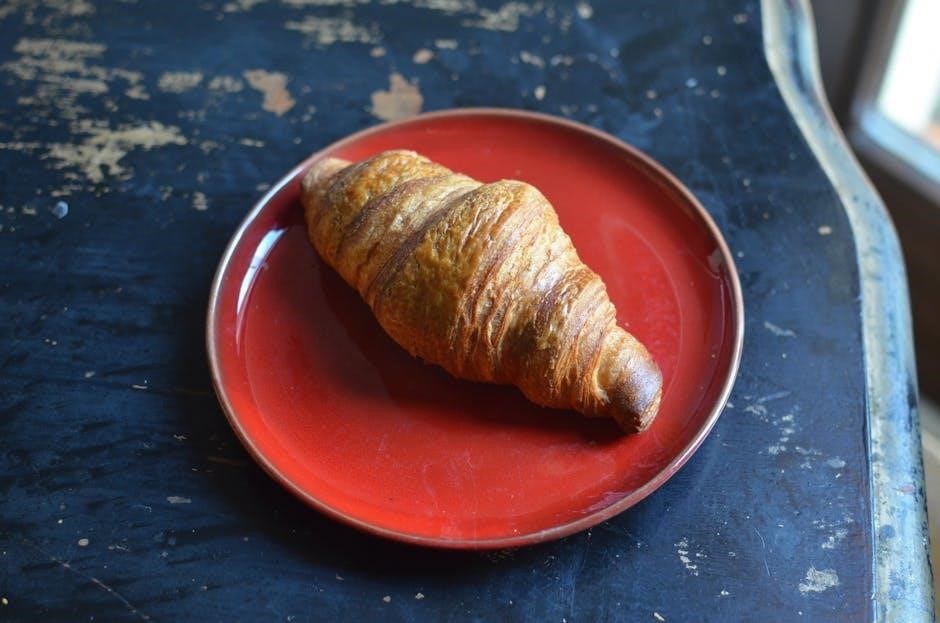
Paleo and Vegan Versions of the 1700 Calorie Meal Plan
Explore tailored options with Paleo and vegan meal plans, focusing on whole foods and plant-based proteins. These versions cater to dietary preferences while maintaining calorie goals effectively.
Paleo Diet: What to Include and Avoid
The Paleo diet focuses on whole, unprocessed foods, including lean meats, fish, fruits, vegetables, nuts, and seeds. It excludes grains, dairy, legumes, added sugars, and processed foods. For a 1700 calorie meal plan, emphasize Paleo-friendly options like grass-fed meats, wild-caught fish, and organic produce. Avoid modern foods such as pasta, bread, and sugary snacks. This approach aligns with the Paleo principle of eating as our ancestors did, promoting weight management and improved energy levels. By adhering to these guidelines, the Paleo version of the meal plan remains nutrient-dense and aligned with calorie goals.
Vegan Diet: Plant-Based Alternatives
A vegan diet emphasizes plant-based foods, excluding all animal products. For a 1700 calorie meal plan, focus on whole grains, legumes, fruits, vegetables, nuts, and seeds. Include protein sources like tofu, tempeh, and lentils. Plant-based milks and vegan-friendly fats like avocado and olive oil are also essential. Avoid dairy, eggs, honey, and any food derived from animals. This approach supports weight loss and overall health while adhering to ethical and environmental principles. By incorporating a variety of colorful, nutrient-rich foods, the vegan version of the meal plan remains balanced and satisfying, ensuring all dietary needs are met within the calorie limit.
Combining Paleo and Vegan Principles
Blending Paleo and vegan diets creates a unique approach, focusing on whole, unprocessed foods while avoiding animal products. This fusion emphasizes fruits, vegetables, nuts, seeds, and Paleo-friendly grains like sweet potatoes and cauliflower. Exclude dairy, legumes, and grains like rice and quinoa, which are typically allowed in vegan diets but not in Paleo. The result is a diet rich in fiber, vitamins, and minerals, with a focus on natural, sustainable eating. This combination supports weight loss and improves overall health, offering a balanced and satisfying meal plan within the 1700 calorie framework, tailored to those seeking both ethical and ancestral dietary practices.
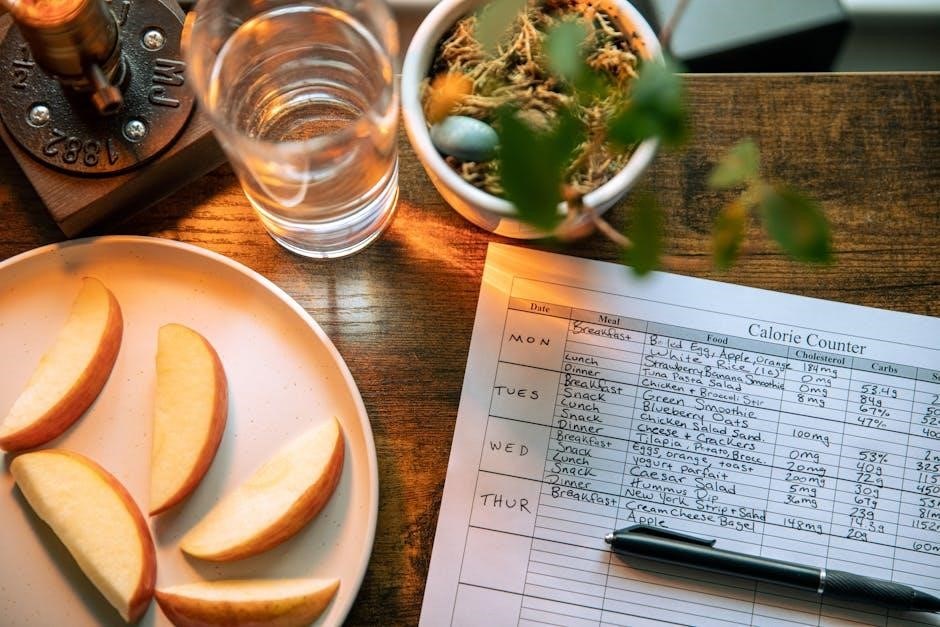
Grocery List and Meal Prep Tips
Stock up on fresh produce, lean proteins, and whole grains for a balanced 1700 calorie diet. Plan meals in advance to save time and ensure consistency.
Essential Items for a 1700 Calorie Diet
A well-rounded grocery list for a 1700 calorie diet includes lean proteins like chicken, fish, and tofu, whole grains such as oats and quinoa, and a variety of colorful vegetables. Incorporate healthy fats like avocados, nuts, and olive oil for satiety and nutrition. Low-calorie snacks, such as Greek yogurt and fresh fruits, help manage hunger. For high-protein options, include eggs, legumes, and plant-based alternatives. Don’t forget herbs, spices, and low-sodium seasonings to enhance flavor without added calories. Staying hydrated is key, so stock up on water, herbal teas, and low-sugar beverages. These items provide a balanced foundation for your meal plan.
Meal Prep Strategies for Success
Effective meal prep is crucial for sticking to a 1700 calorie diet. Start by planning your meals for the week, ensuring variety and nutrient balance. Portion control is key—use measuring cups or a food scale to avoid overeating. Prep ingredients like chopped vegetables, marinated proteins, and whole grains in advance to save time. Store meals in airtight, labeled containers for freshness and convenience. Incorporate hydration by prepping water bottles or herbal teas. Keep snacks like nuts or fruit readily available to curb hunger. A well-organized fridge and pantry will help maintain consistency and reduce the temptation to deviate from your plan.
Cost-Effective Shopping Tips
Save money while following the 1700 calorie meal plan by adopting smart shopping habits. Buy bulk items like whole grains, proteins, and healthy fats, as they are cost-effective and versatile. Plan meals around seasonal produce to reduce expenses. Compare prices between brands and stores to find affordable options. Use coupons, discount codes, or loyalty programs for additional savings. Opt for frozen or canned vegetables, which are nutritious and budget-friendly. Prep meals in advance to avoid food waste and reduce impulse purchases. Consider affordable protein sources like beans, eggs, or canned fish. Shop sales and stock up on non-perishable items to maintain a well-stocked pantry.
Staying Consistent with the 1700 Calorie Meal Plan
Consistency is key to achieving success with the 1700 calorie meal plan. Plan meals, track progress, and stay motivated to maintain discipline and reach your goals effectively.
Overcoming Cravings and Hunger
Managing cravings and hunger is crucial for adhering to a 1700 calorie meal plan. Stay hydrated, as thirst is often mistaken for hunger. Incorporate high-protein and high-fiber foods to increase satiety. Plan snacks like nuts, fruits, or yogurt to avoid overeating. Practice mindful eating by savoring meals slowly. Avoid temptation by removing unhealthy foods from your environment. Use herbal teas or black coffee to curb cravings. Consistency in meal timing helps regulate hunger hormones. If cravings persist, opt for healthier alternatives like dark chocolate or air-popped popcorn. Tracking progress and staying motivated will help you overcome challenges and maintain discipline.
Maintaining Motivation
Maintaining motivation is key to successfully following a 1700 calorie meal plan. Set realistic goals and celebrate small achievements to stay encouraged. Track your progress through photos, measurements, or a journal to visualize improvements. Surround yourself with supportive friends or join a community for accountability. Reward yourself with non-food treats, like new workout gear, to stay motivated. Focus on how healthy habits make you feel, rather than just the scale. Remind yourself of your long-term goals, such as increased energy or better health. Consistency is more important than perfection—stay committed, and results will follow over time.
Tracking Progress
Tracking progress is essential for staying on course with your 1700 calorie meal plan. Use a food diary or an app to log daily meals, ensuring you meet your caloric and macronutrient goals. Regularly monitor weight, measurements, and progress photos to see improvements. Celebrate small victories, like increased energy or better digestion, to stay motivated. Adjust portions or food choices if needed, based on how your body responds. Consistency is key, so track habits like hydration, sleep, and exercise, as they influence results. By monitoring progress, you can make informed decisions and stay committed to your health journey.
Health Considerations
A 1700 calorie meal plan supports weight loss and muscle maintenance but may not suit everyone. Ensure balanced macronutrients and essential nutrients. Consult a healthcare professional before starting.
Pros and Cons of a 1700 Calorie Diet
A 1700 calorie diet is effective for weight loss and can support muscle maintenance when paired with high-protein foods. It promotes a calorie deficit while providing balanced nutrition. However, it may leave some individuals hungry, particularly those with higher energy needs. Potential downsides include nutrient deficiencies if meals are not well-planned. It’s ideal for those with a sedentary to moderately active lifestyle but may not suit athletes or individuals with high metabolic rates. Always consult a healthcare professional to ensure it meets your specific health requirements and goals.
Who Should and Shouldn’t Follow This Plan
The 1700 calorie meal plan is ideal for individuals seeking weight loss or maintenance, particularly those with a sedentary to moderately active lifestyle. It suits people looking for a structured, high-protein diet to support muscle retention. However, it may not be suitable for athletes or those with high energy needs, as it could lead to fatigue. Growing teenagers, pregnant women, or individuals with certain medical conditions should avoid this plan due to potential nutrient deficiencies. Additionally, those with a history of eating disorders or requiring more calories for their lifestyle should consult a healthcare professional before starting.
Consulting a Healthcare Professional
Before starting a 1700 calorie meal plan, consulting a healthcare professional is crucial, especially for individuals with medical conditions or those taking medication. They can assess your health status and ensure the plan aligns with your needs. This step is particularly important for those with diabetes, heart disease, or other chronic conditions. A healthcare provider can also help tailor the plan to your lifestyle and monitor potential side effects. Additionally, they can provide guidance on supplements or nutrients that may be lacking in a calorie-restricted diet. This ensures a safe and effective approach to weight loss and overall health improvement.
Downloadable 1700 Calorie Meal Plan PDF
Access a comprehensive guide with customizable meal plans, macronutrient breakdowns, recipes, and grocery lists. Download the free PDF for a structured approach to your diet journey.
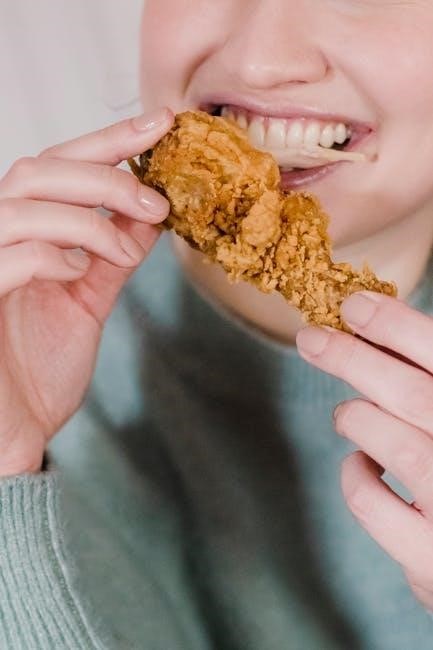
Features of the PDF Meal Plan
The 1700 Calorie Meal Plan PDF offers a detailed weekly schedule with high-protein options, Paleo, and vegan variations. It includes macronutrient breakdowns, recipes, and a grocery list for easy meal prep. The plan is customizable to suit individual needs, ensuring flexibility and sustainability. With clear calorie tracking and balanced nutrition, it supports weight loss and muscle maintenance. Downloadable for free, this guide provides a practical roadmap for achieving dietary goals efficiently.
How to Download and Use the Plan
Downloading the 1700 Calorie Meal Plan PDF is straightforward. Visit the provided link and save the file to your device. Once downloaded, review the structured meal schedule, including daily breakfast, lunch, dinner, and snack options. Use the grocery list to stock up on essentials and follow the meal prep tips for convenience. Customize the plan by adjusting portion sizes or swapping ingredients based on preferences. Track your progress and stay motivated by following the guide’s recommendations. This PDF serves as a comprehensive tool to help you stick to your dietary goals and achieve sustainable weight loss.
Customizing the Plan for Individual Needs
Customizing the 1700 Calorie Meal Plan allows you to tailor it to your preferences and dietary requirements. Swap high-protein options with alternative sources like tofu or legumes for a vegan approach. Incorporate Paleo-friendly ingredients by avoiding grains and focusing on whole foods. Adjust portion sizes based on activity levels or specific calorie needs. Use the provided grocery list as a foundation and modify it with your favorite ingredients. For meal prep, portion meals in advance to save time and ensure consistency. This flexibility makes the plan adaptable, helping you maintain motivation and achieve your health goals effectively.